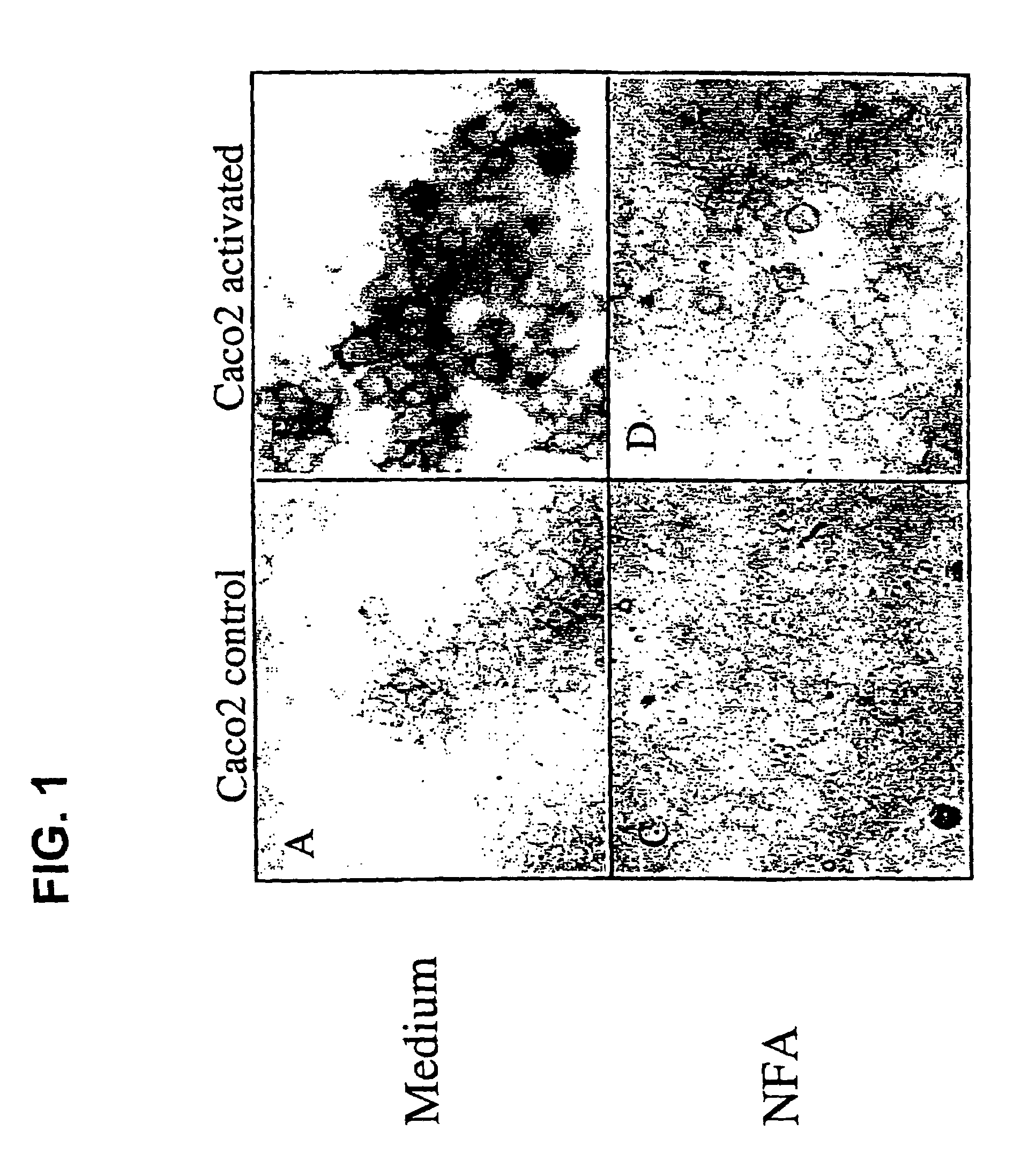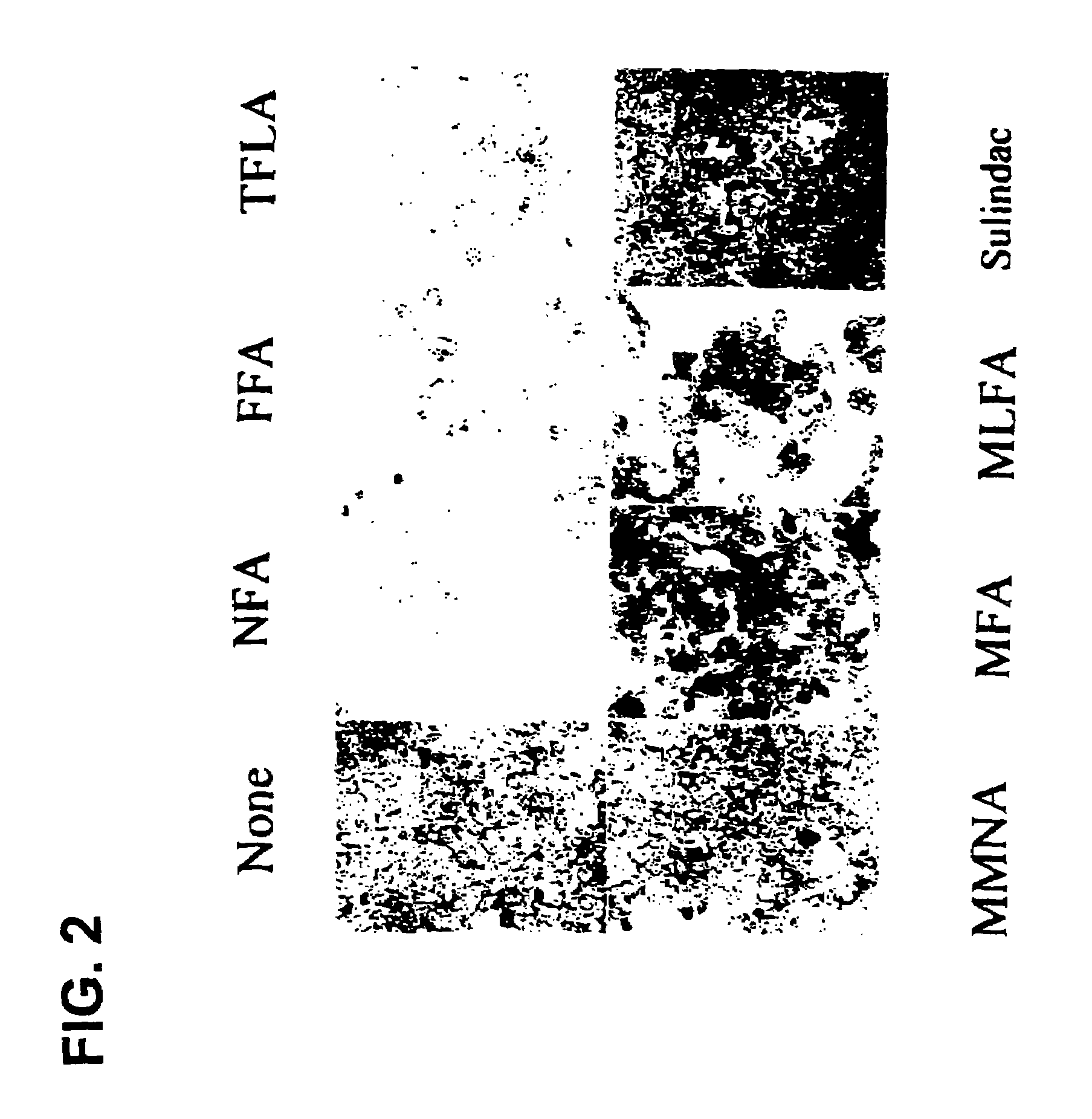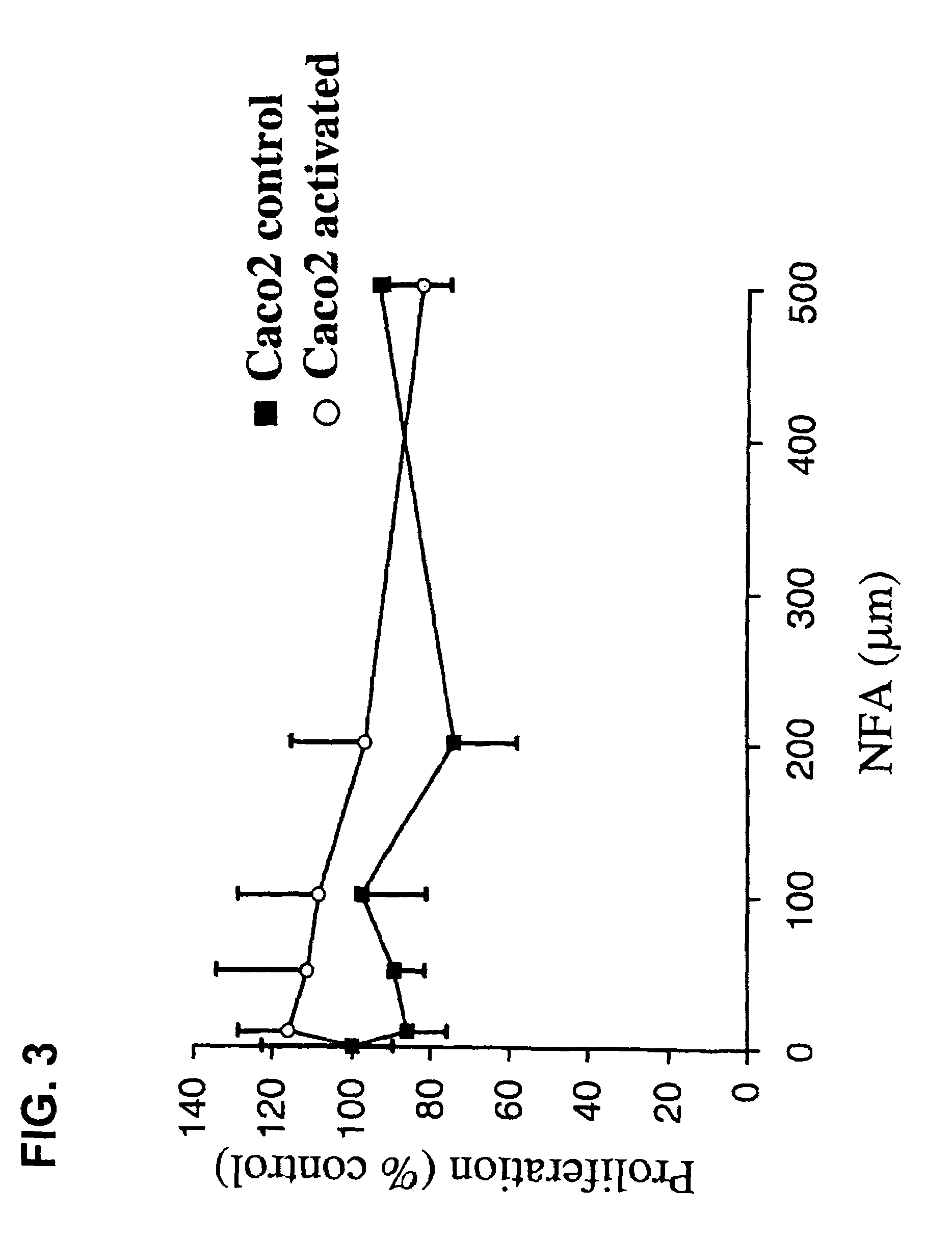Mucin synthesis inhibitors
a technology of mucin and inhibitors, applied in the field of modulating mucin synthesis, can solve the problems atelectasis which is often complicated, and mucus plugging, so as to reduce the efficacy and safety, and reduce the effect of mucin synthesis or mucus over-production
- Summary
- Abstract
- Description
- Claims
- Application Information
AI Technical Summary
Benefits of technology
Problems solved by technology
Method used
Image
Examples
example 1
NFA Inhibits Mucin Production by Caco2 Cells Activated to Over-Produce Mucin
[0082]Activated Caco2 cells that express the mRNA of MUC1, MUC2, MUC3, MUC4, MUC5B and MUC5AC have been produced and used to test for inhibitors of mucin production. These cells can be stained for mucin using. Periodic Acid-Schiff staining (PAS). As shown in FIG. 1, although Caco2 control cells displayed a basal PAS staining with a few small glycoconjugates vesicles scattered about (panel A), activation of the Caco2 cells dramatically increased the number and intensity of PAS positive mucin glycoconjugates (panel B). The activated Caco2 cells were cultured in the presence of niflumic acid (NFA) or 4,4′-diisothiocyanostilbene-2,2′-disulfonic acid (DS). At the indicated concentrations (100 μm for NFA and 300 μm for DIDS), PAS staining of inhibitor treated activated Caco2 cells revealed significantly fewer positive staining mucin glycoconjugates as compared with the untreated cells (FIG. 1D compared to 1B). In ...
example 2
NFA Inhibits Eotaxin Production by Caco2 Cells Activated to Over-Produce Mucin
[0083]Activated LHL4 cells that express and secrete eotaxin have been produced and used to test for inhibitors of eotaxin production. These cells were assayed in vitro for eotaxin by an ELISA technique well known in the art (R&D Systems). As shown in FIG. 4, activated LHL4 cells were cultured in the absence (control) or presence of increasing concentrations of niflumic acid (NFA). Significant inhibition of eotaxin production was noted with increasing concentrations of NFA. Similar inhibition was seen with DIDS and SIDS in an identical experiment. Mad / C3 cells show similar inhibition of eotaxin production by NFA, DIDS, and SIDS. Taken together, these results clearly demonstrate a direct effect of NFA on eotaxin production.
example 3
Inhibition of Mucin Overproduction in Murine Models of Asthma by NFA
[0084]Certified virus-free male and female mice of the following strains, DBA, C57B6 and B6D2F1 were purchased from the National Cancer Institute or Jackson Laboratories (Bar Harbor Me.). IL-9 transgenic mice (Tg5) and their parent strain (FVB), were obtained from the Ludwig Institute (Brussels, Belgium). Animals were housed in a high-efficiency, particulate filtered air facility and allowed free access to food and water for 3 to 7 days prior to experimental manipulation. The animal facilities were maintained at 22° C. and the light:dark cycle was automatically controlled (10:14 hour light dark).
[0085]Phenotyping and Efficacy of Pretreatment.
[0086]Animals either received no pretreatment or were sensitized by nasal aspiration of Aspergillus fumigatus antigen to assess the effect of pretreatment on bronchial hyperresponsiveness, composition of bronchoalveolar lavage fluid, mucin production and serum IgE. Mice were cha...
PUM
| Property | Measurement | Unit |
|---|---|---|
| concentration | aaaaa | aaaaa |
| concentrations | aaaaa | aaaaa |
| concentration | aaaaa | aaaaa |
Abstract
Description
Claims
Application Information
 Login to View More
Login to View More - R&D Engineer
- R&D Manager
- IP Professional
- Industry Leading Data Capabilities
- Powerful AI technology
- Patent DNA Extraction
Browse by: Latest US Patents, China's latest patents, Technical Efficacy Thesaurus, Application Domain, Technology Topic, Popular Technical Reports.
© 2024 PatSnap. All rights reserved.Legal|Privacy policy|Modern Slavery Act Transparency Statement|Sitemap|About US| Contact US: help@patsnap.com










